The Mosque-Cathedral of Córdoba, Spain
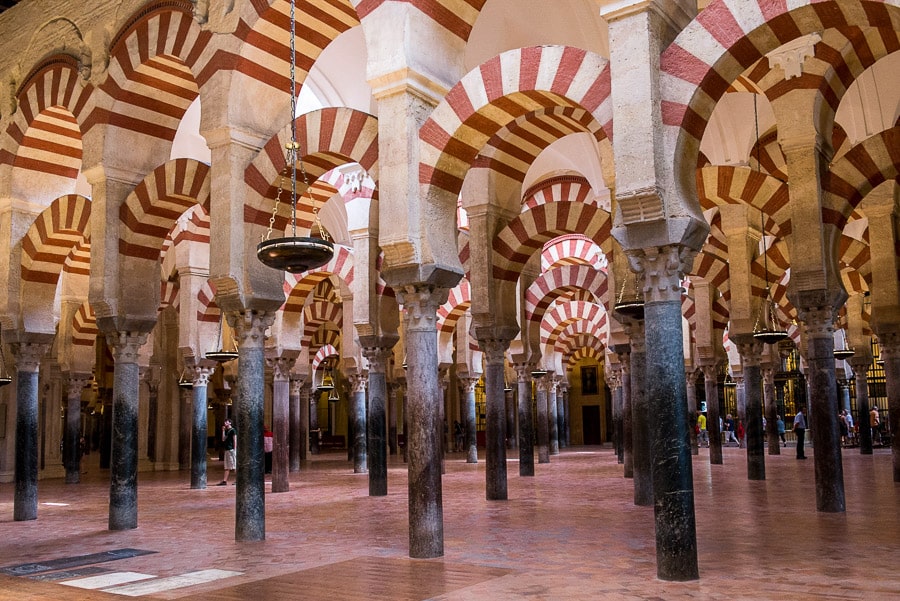
The Mosque-Cathedral of Córdoba, (Mezquita-Catedral de Córdoba) is also known as the Great Mosque of Córdoba or, simply, the Mezquita, is one of the most culturally and historically significant landmarks of Spain. The cultural importance of the Mosque-Cathedral as both an exceptional example of Moorish architecture and of the interaction of Islamic Spain with the Christian re-conquerors is difficult to exaggerate. Along with the Alhambra of Granada and the Alcazar of Sevilla, it makes up the trifecta of Moorish architecture left over from when the Muslims controlled the Iberian peninsula.
The origins of the Mosque-Cathedral date back to the 8th century when Córdoba soon after came under Muslim rule. on the site of a Visigothic church – which recent excavations of Roman ruins under the mosque have revealed – was built on the top of its predecessor.
The construction of the mosque began in 785 under the Emir Abd al-Rahman I, the first Umayyad Emir of Córdoba. Over the years, subsequent emirs and caliphs added extensions and embellishments, resulting in a spectacular structure that became the center of Islamic worship in the region called Al-Andalus – today known as Andalucía.
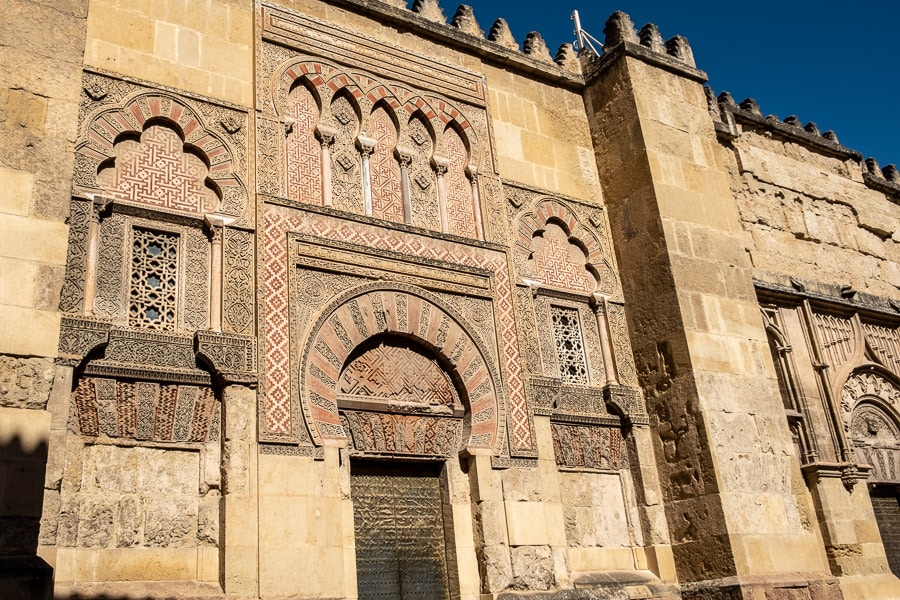
The original architectural style of the Mosque-Cathedral is, of course, Islamic. The mosque’s exterior showcases a harmonious combination of arches and columns, as well as intricate geometric patterns and ornate tile work. The iconic bell tower, known as the Torre del Alminar or the Tower of the Minaret, is a prime example of Moorish architecture and provides a striking focal point.
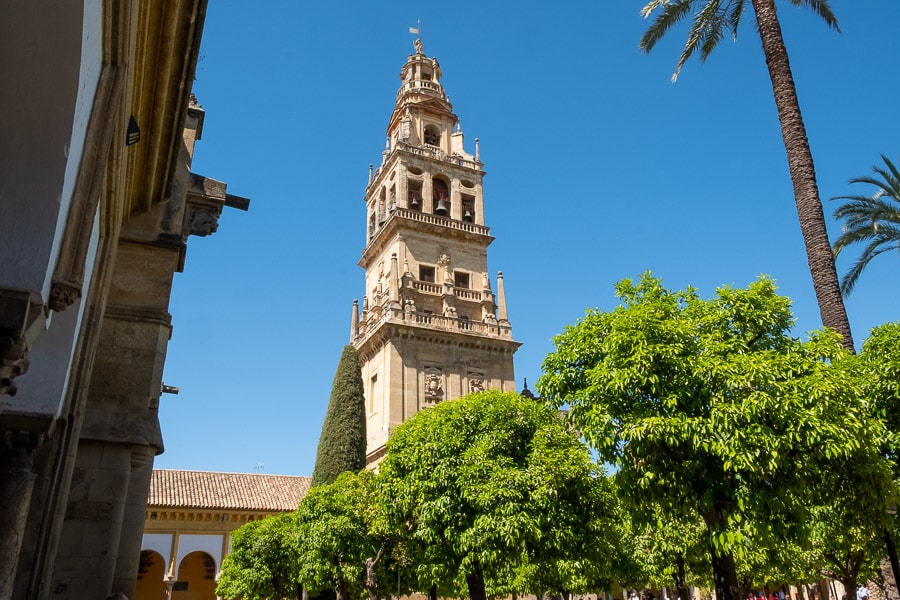
Upon entering the mosque grounds, visitors are greeted by the Patio de los Naranjos (Court of the Orange Trees). This courtyard is lined with rows of orange trees and features a fountain at its center. It also offers the view of the original Minaret, now converted into a Christian bell tower.
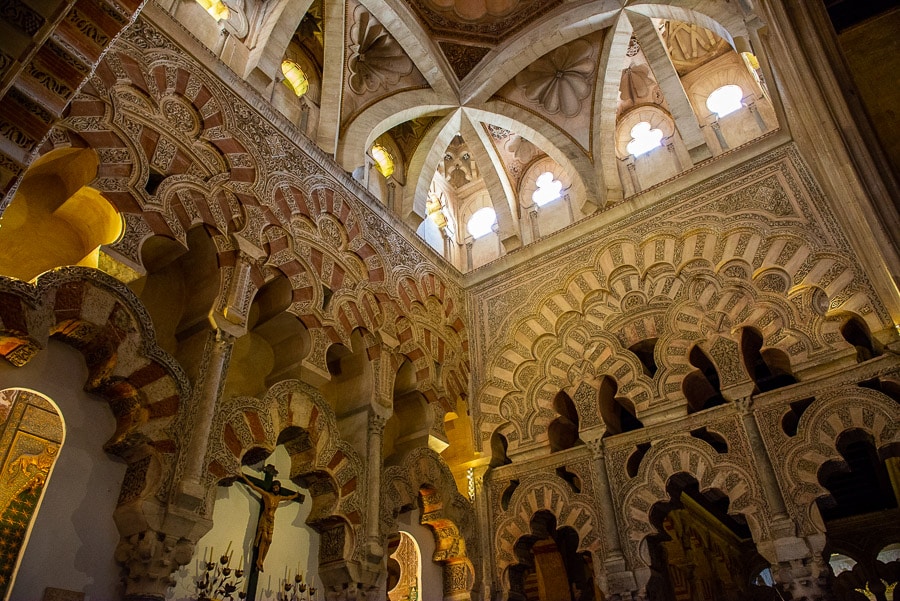
The prayer hall itself is a mesmerizing sight to behold. The vast expanse of the hall is supported by hundreds of double-arched columns, made of jasper, onyx, marble, and granite, which create a mesmerizing play of light and shadow. The arches are decorated with intricate and colorful patterns, including motifs such as horseshoes, stars, and interlacing geometric shapes. The the alternating red and white wedges of the arches, contribute to the distinctive visual appeal of the space.
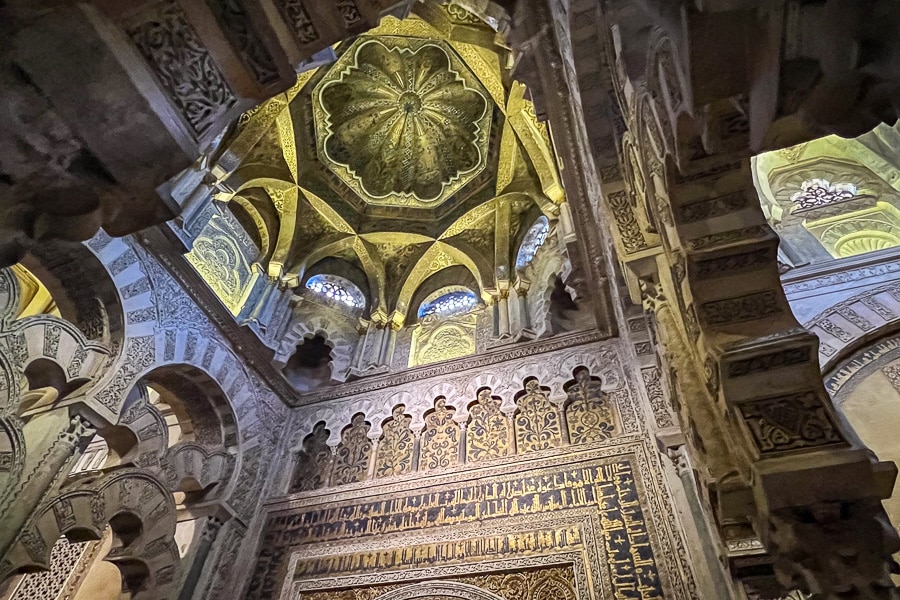
At the heart of the Mosque-Cathedral is the Mihrab, the prayer niche that indicates the direction of Mecca. This space is a masterpiece of Moorish art, with its intricate geometric patterns and stunning mosaics made of gold, silver, and precious stones. The domed chamber behind the Mihrab, known as the Maqsura, was once reserved for the caliph or ruling emir during prayers.
The Christian reconquest of Córdoba by King Ferdinand III of Castile in 1236 ended more than five centuries of Islamic rule of the city, and began the movement toward repurposing the mosque as a Christian cathedral. Thus, the Christian additions within the mosque resulted in what could charitably be called “a unique fusion” of Islamic and Christian architectural styles. (Some, including me, would name the ornate Renaissance and Baroque cathedral plopped in the middle of the elegant simplicity of the mosque’s prayer hall something less charitable than a “fusion.”) We should all be thankful that the 16th Century Spanish monarch Carlos V visited Córdoba, saw what was going on, and put a stop to it.
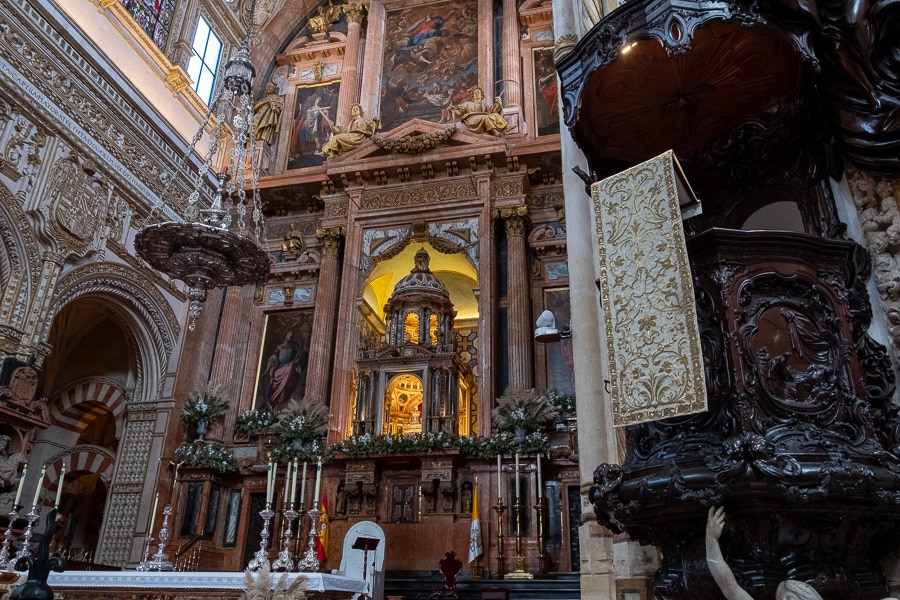
The Cathedral section of the Mosque-Cathedral is located in the center of the structure and stands as a stark contrast to the Islamic architecture surrounding it. This “Main Chapel” (Capilla Mayor) was built in the 16th century and features intricate plaster work, gilded wood carvings, and a Baroque-style dome dome adorned with paintings depicting scenes from the life of Christ.
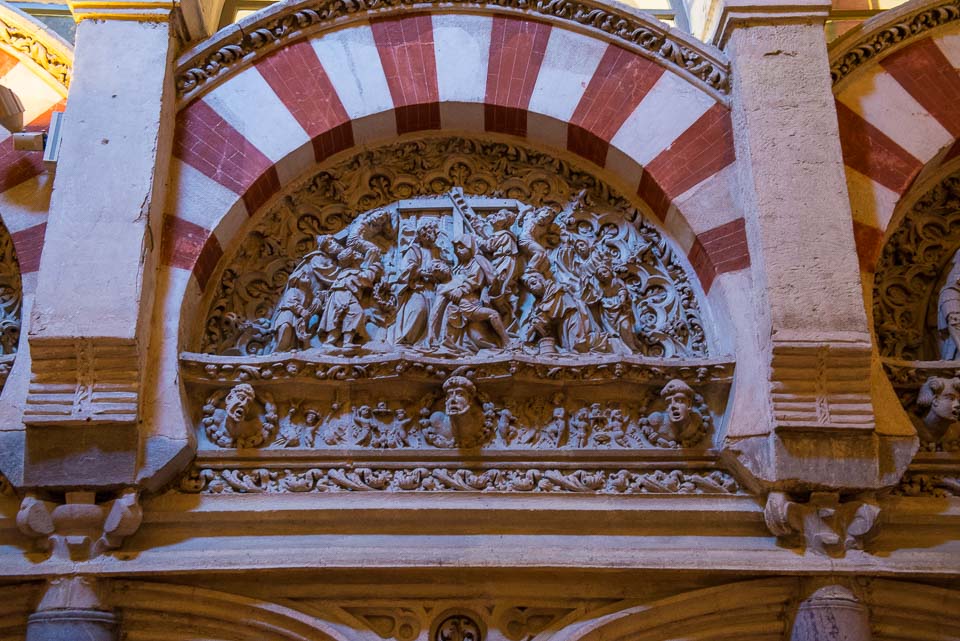
But, luckily all was not lost. The original effect of the geometry of the pillars and arches is still apparent in many vistas. Although those vistas are always cut short by the Christian intrusions, you can still get the idea of what the huge space must have looked like when the view down the rows of arches was uninterrupted and seemed to go on forever.
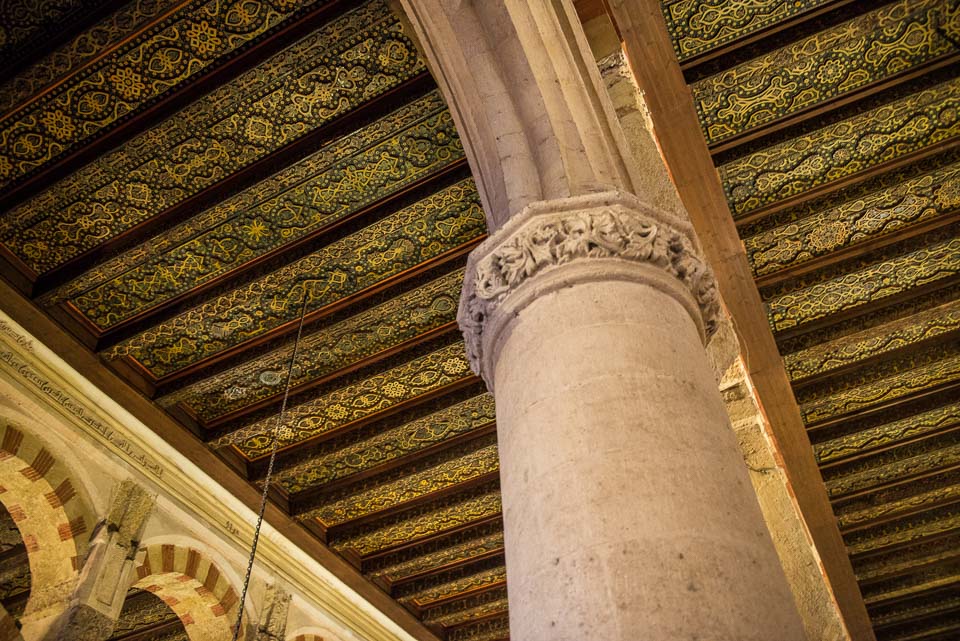
To book advance tickets to the Mosque-Cathedral of Córdoba, click the link.
General admission is €13. Admission is €10 For people over the age of 65, students between the ages of 15 and 26, and holders of the “European Youth Card.” Admission is €7 for children between the ages of 10 and 14.
Opening hours are usually from 10:00 to 19:00 on Mondays through Saturdays, and from 08:30 to 11:30 and from 15:00 to 18:30 on Sundays.
The Mosque-Cathedral of Córdoba and the historic center the city make up a UNESCO World Heritage site. Here’s a list of all the UNESCO sites in Spain. The Mosque-Cathedral is also one of the 12 Great Cathedrals of Spain, and one of what I call The Seven Wonders of Spain.
When you’re thinking of traveling, your first stop should be our Travel Resources page, where we list all the essentials you need to make your travels easier, cheaper, safer, and more fun.
You can also help yourself get ready for your travels by reading our Get Started Planning Your Trip Now page.
We love traveling–with the right gear. We’ve gathered a lot of the stuff we use to make travel more pleasant and efficient all on one page. Shop our Travel Past 50 Amazon page to find our favorite gear. If you purchase something from the store, Travel Past 50, as an Amazon affiliate, may receive a small commission at no extra charge to you. Thanks.
We never leave home without our travel insurance. Nor should you. Search for the travel insurance from Allianz that best meets your needs, whether it be an annual plan or a single trip.
You can see (and buy prints) of most of our travel photos in one place on this page.
Note: This post and other posts on TravelPast50.com may contain paid or affiliate advertising links. As an Amazon Associate we earn from qualifying purchases.
The specifics of the packing list for the Camino de Santiago don’t matter as much as the main idea:…
Copyright © 2024 Retiring & Happy. All rights reserved.







